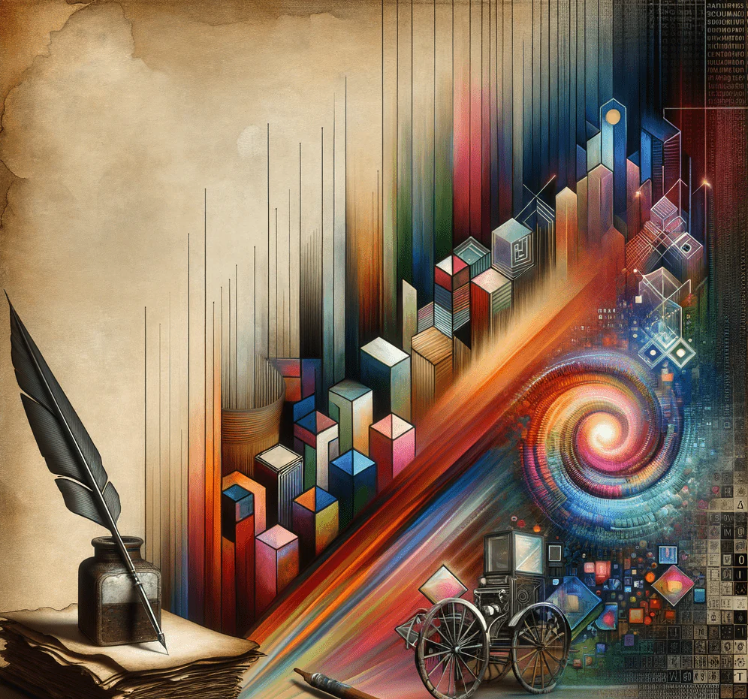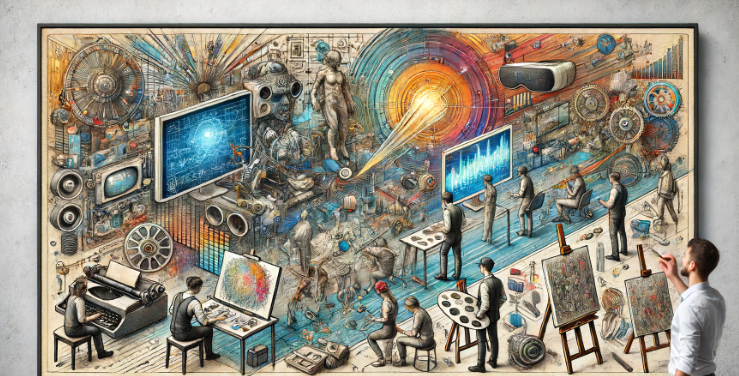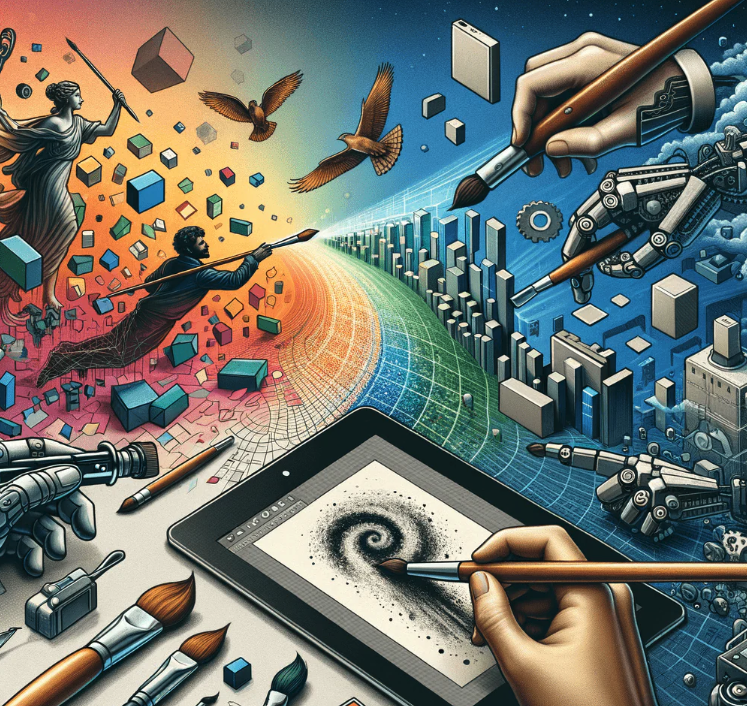The Influence of Technology on Contemporary Art: Exploring Digital Art Trends
In recent decades, technology has revolutionized various industries, including the realm of art. As digital tools continue to evolve, they have reshaped the way artists create, share, and engage with their audience. This blog explores the profound impact technology has had on contemporary art, examining key digital art trends and how they are shaping the modern creative landscape.
Google images: Artist unknown
1. The Dawn of Digital Art
The relationship between technology and art isn't new. The journey began as early as the 1960s with pioneers like Nam June Paik, who is often regarded as the father of video art. However, with the advent of personal computers and software programs in the late 20th century, digital art became a more accessible and mainstream medium. Tools such as Adobe Photoshop and CorelDRAW empowered artists to experiment with different styles, combining traditional techniques with digital enhancements.
2. Current Digital Art Trends
a. Digital Painting and Illustration Digital painting has emerged as a dominant force in contemporary art, with artists using tools like Procreate, Adobe Fresco, and Krita. These platforms mimic the texture and feel of traditional painting while offering unique features like layers, undo options, and custom brushes. This versatility allows artists to explore complex compositions without the constraints of physical materials.
b. 3D Modeling and Sculpting Programs like Blender, ZBrush, and Autodesk Maya have pushed the boundaries of what can be created in a digital space. Artists now construct intricate 3D models and sculptures for various applications, from fine art to commercial design. This technology enables detailed and lifelike representations that would be challenging to achieve using conventional means.
c. Generative Art One of the most exciting intersections of art and technology is generative art, where artists use algorithms and coding to create works that can range from dynamic visuals to complex interactive pieces. Platforms like Processing and P5.js allow artists to blend their programming skills with creative expression. These pieces can evolve based on user interaction, randomness, or specific parameters set by the artist.
Google image: Artist unknown
d. Augmented Reality (AR) and Virtual Reality (VR) AR and VR technologies have added a new dimension to how art is experienced. Museums and galleries now offer immersive exhibits that allow viewers to step into virtual worlds or interact with augmented artworks through mobile apps. Artists leverage these technologies to create installations that challenge the boundaries between reality and imagination.
e. NFTs and Blockchain Art The rise of non-fungible tokens (NFTs) has been a game-changer for digital artists, providing a new way to monetize and distribute their work. Through blockchain technology, artists can sell verifiable, unique digital items and retain a percentage of the profit from future sales. This trend has empowered artists to gain greater financial independence while opening debates about the environmental impact and the value of digital ownership.
3. The Challenges and Ethical Questions
While technology has opened up countless opportunities for artists, it has also introduced new challenges. The digital nature of contemporary art can make it vulnerable to issues like copyright infringement and digital theft. Additionally, the use of AI in art creation has sparked discussions about authorship and the definition of originality. Artists and viewers alike are grappling with the question of whether an algorithmically generated piece holds the same value as one created solely by human hands.
4. The Future of Art and Technology
Google images: Artist unknown
The intersection of art and technology is set to continue evolving. Emerging tools like AI-powered software (e.g., Midjourney and DALL·E) are changing how we perceive creativity itself. These platforms generate artworks based on textual input, suggesting that the role of the artist may become more of a curator or collaborator with machines.
Looking forward, innovations like holographic displays, real-time collaboration tools, and advances in AI could further transform the art world. This digital shift isn't just a trend; it represents a long-term evolution in how society expresses, shares, and appreciates artistic works.
The fusion of technology and art has democratized creativity, enabling artists from diverse backgrounds to showcase their work on a global stage. While this revolution presents new challenges, it also offers exciting possibilities that push the boundaries of traditional art forms. As digital trends continue to develop, the art world must adapt, ensuring that creativity, ethics, and accessibility are prioritized in this ever-evolving landscape.




